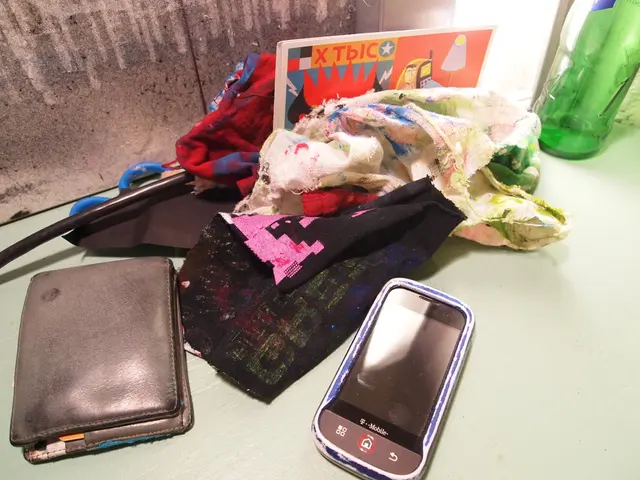Telling Tales Interactively: Techniques in Museum Architecture
Museums, once seen as solemn sanctuaries of history and art, are breaking free from their passive reputations. Today, they're emerging as pulsating, story-driven experiences designed to keep visitors guessing, encouraging them to touch, listen, and even become one with the narrative. In a world dominated by immediate gratification and digital content, museums are innovating with interactive design, creating a new art form: an art of storytelling that fully engulfs visitors in the worlds they explore.
This transformation from static displays to dynamic journeys is revolutionizing the museum experience. Through guided paths, immersive narratives, and interactive elements, museums use design to lead us through tales that resonate long after we leave. Let's delve deeper into how museums are transforming their spaces to create striking storytelling experiences that keep us eagerly returning.
Crafting a Fluid Storytelling Journey
Imagine stepping into a museum where each exhibit flows organically into the next, offering a seamless storytelling experience. This sense of fluidity is crucial to the allure of storytelling in museum design. Architects and designers are carefully planning paths that move visitors through galleries with a natural sense of progression, giving each section a narrative arc.
Consider the National Museum of African American History and Culture in Washington, D.C., where visitors descend a spiraling corridor chronicling the torment of slavery, struggle, resilience, and triumph. This journey isn't merely a physical descent and ascent; it mirrors an emotional narrative, pulling visitors along a poignant, lasting tale.
Interactive Spaces: From Observer to Participant
No longer restricted to glass cases and labels, museums are using interactivity to shift passive observers into engaged participants. Interactive installations, touch screens, virtual and augmented reality, and more allow visitors to experience history, art, and science firsthand, as if they were a part of the story itself.
At the Museum of Pop Culture in Seattle, visitors can play with soundboards, create their own album covers, and even experiment with instruments. These exhibits don't just display art; they invite visitors to become creators, fostering a deeper emotional connection to the narrative.
Emotionally Impactful Experiences Through Sensory Design
To create a lasting impression, museums must engage visitors on an emotional level. Sensory elements such as lighting, soundscapes, and even scents add depth and atmosphere to exhibits, shaping the emotional response of visitors and solidifying the impact of the story.
Take the Anne Frank House in Amsterdam, where the right blend of city noise, natural light, and authentic ambiance creates a realistic, haunting atmosphere, enriching the emotional weight of Anne Frank's story and making the connection to her personal plight more intimate.
The Magical Powers of Play and Imagination
The essence of storytelling in museum design lies in play, which captivates both young and old, inspiring exploration, imagination, and engagement. By incorporating play into their exhibits, museums foster active participation and open-minded learning.
The Museo dei Bambini in Lecce, Italy, showcases how play can make art, science, and culture accessible to children. Each corner of the museum is designed to stimulate curiosity, fostering a connection between visitors and the narratives they explore.
Theming for Multi-Layered Storytelling
To maintain cohesion, museums with multiple exhibits organization their collections into thematic sections or zones. These zones function like book chapters, allowing visitors to explore different aspects of the story while maintaining a connection to the overarching theme.
The Museum of Modern Art in New York City, for instance, organizes its collections by artistic movement, helping visitors explore the evolution of modern art in an engaging, chronological manner.
Personalized Stories: Shaping the Experience to Suit the Visitor
Modern museum design caters to visitors by offering personalized experiences, allowing them to curate their own visits based on interests. With self-guided audioguides, digital wayfinding, and interactive maps, visitors can shape their own stories, making their journey unique and engaging.
Visitors at the Louvre can customize their own routes, focusing on the artifacts that pique their curiosity, creating a one-of-a-kind experience tailored to them.
Pop-up Exhibits and Flexible Spaces
To keep the storytelling fresh and dynamic, museums showcase temporary exhibits and adaptable spaces that allow them to switch themes for special events. These areas keep visitors coming back for more, ensuring the museum feels alive and evolving.
The Victoria and Albert Museum in London, for example, occasionally transforms gallery spaces for pop-up exhibits, offering fresh experiences and new narratives to regular patrons and attracting new visitors.
Interactive Design: A New Frontier in Storytelling
Museums continue to push the boundaries of storytelling by integrating new technologies and innovative designs. As they embrace interactivity, the line between the storyteller and the story explorer will blur, making the journey through the exhibits a uniquely personal experience.
By blending fluid design, sensory experiences, interactivity, and technology, museums are creating immersive experiences that speak to modern audiences on a deeper level. The future of museums lies in the power of storytelling, forever transforming the way we explore culture, history, and art.
So the next time you step into a museum, notice how each space pulls you in and involves you in the narrative-you're no longer just an outsider; you're an essential component, woven into the story itself. That's the art of interactive storytelling in museum design-a new and captivating experience, crafted solely for you.
- The Museo dei Bambini in Lecce, Italy, is an example of a museum that uses play and imagination to make art, science, and culture accessible to children, fostering a connection between visitors and the narratives they explore.
- The Museum of Pop Culture in Seattle uses interactive exhibits, such as soundboards, album cover creators, and experiential activities with instruments, to shift passive visitors into engaged participants, fostering a deeper emotional connection to the narrative.
- At the National Museum of African American History and Culture in Washington, D.C., visitors descend a spiraling corridor that chronicles the torment of slavery, struggle, resilience, and triumph, creating a poignant and lasting emotional narrative.
- The Victoria and Albert Museum in London occasionally transforms gallery spaces for pop-up exhibits, offering fresh experiences and new narratives to regular patrons and attracting new visitors, emphasizing the evolving nature of museums in the age of storytelling.






